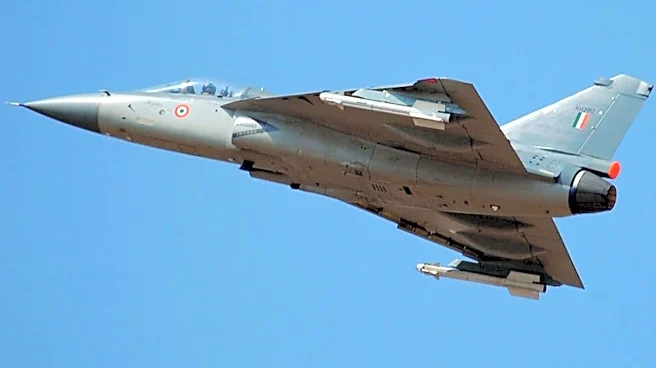A Light Combat Aircraft (LCA) Tejas that crashed during an air show in Dubai was performing a negative-G turn shortly before impact, according to aviation experts who reviewed early videos of the manoeuvre.
The Indian Air Force (IAF) confirmed the incident on X, adding that the pilot did not survive in the fatal crash.
While the cause will be known only after a full investigation, visual evidence from the event shows the jet dropping altitude abruptly as it attempted to return to level flight after completing a loop.
What a G-Turn Means
- In aviation, G-forces describe the pressure exerted on an aircraft and its pilot during manoeuvres.
- Positive G pushes the pilot downward into the seat—common during turns or climbs.
- Negative G does the opposite, lifting the pilot upward as if gravity momentarily reverses.
A negative-G turn occurs when the aircraft banks or changes direction while experiencing negative G-forces.
This can happen during sharp aerobatic moves, sudden descent, or turbulence.
If not managed correctly, negative G-forces can impair a pilot’s ability to control the aircraft because blood can pool in the head, causing disorientation or even loss of consciousness. Fighter pilots undergo specialised training to counter these effects.
The Tejas involved in the Dubai crash belonged to a squadron based in Sulur, Tamil Nadu, and had been in service since 2016.
Following the retirement of the MiG-21 fleet, the Tejas was positioned as a key workhorse of the IAF. It is also regarded as one of the safest fighters in the Air Force’s inventory, the Dubai crash is only the second loss of a Tejas in 24 years.
The first accident occurred in March 2024 near Jaisalmer, Rajasthan, more than two decades after the aircraft’s maiden test flight in 2001.
The Tejas is intentionally designed to be aerodynamically unstable, a feature that enhances agility and manoeuvrability.
To keep such an aircraft controllable, it relies on an advanced fly-by-wire flight control system that constantly stabilises it through computer inputs.
This design philosophy is also used in several modern fighters, including the American F-16.


/images/ppid_a911dc6a-image-176372306725683464.webp)

/images/ppid_a911dc6a-image-17637256252146657.webp)


/images/ppid_a911dc6a-image-176373344510343016.webp)
/images/ppid_a911dc6a-image-176372303165858782.webp)


/images/ppid_59c68470-image-176347003451191506.webp)

/images/ppid_a911dc6a-image-176346562755756771.webp)
